This series are actually integrated circuits in two different versions.
One version uses only diodes for temperatur compensation resp. integral sensing diodes (usually created by an external potentiometer and an external Vbe multiplier, either as single or darlington transistor)
Datasheets therefore are here
http://www.semicon.sanken-ele.co.jp/sk_content/std03n_ds_en.pdf
http://www.semicon.sanken-ele.co.jp/sk_content/std03p_ds_en.pdf
An other version uses additional emitter degeneration resistors - go to
http://www.profusionplc.com/images/data-sheets/sap16n.pdf
http://www.profusionplc.com/images/data-sheets/sap16p.pdf
http://www.profusionplc.com/images/data-sheets/sap15n.pdf
http://www.audiolabga.com/pdf/SAP16N.pdf
http://akizukidenshi.com/download/MN15N.pdf
A line up of this series is listed here
Techno SAP130 STD03P STD03N 130 Watt HiFI
have a look also in Douglas Self's book "Audio Power Amplifier Design", Page 527/528 under
https://books.google.de/books?id=7d...EQ6AEIQTAB#v=onepage&q=diyaudio std03&f=false
According the basic description the most important benefit is the fact, that the thermal resistance between the diodes for temperatur compensation and the actually power transistor is much more lower as in such cases, where the elements for temperatur compensation are outside.
OTOH I observe, that the reliability of all power amps equipped with this SAP/STD series instead with SANKEN's tranditional LAPT power devices like 2SC2922/2SA1216 isn't particularly high - just here on diyaudio there are several threads in this case - go to:
Pioneer AV amp
sap17
DK Designs MK II
Help Loking to get SAP-15 NO/PO Matched?
Marantz SR6200
Help Troubleshooting a blown amp (SAP16)
Marantz SR5400
sap17's in Marantz Amp
SONY V333ES
Looking for Transistors
Cambridge Audio A5
Cambridge Audio A5 repair job
Help desperately needed with find
Cambridge Audio P500
Cambridge P500 question
possible replacement for sap16n and p using conventional bce output
Cambridge Audio A500
Blown power transistor SAP15 on a Cambridge A500
Cambridge Distorting
Sanken STD03 in Europe
WTB: Sanken SAP15N & SAP15P (or STD03N & STD03P if compatible)
Cambridge Audio A500 - Worth Repairing ?
Arcam A65
Alternatives to Sanken SAP15 in an Arcam A65
Arcam A85
Sanken SAP15 transistors
instrumental/guitar amp, unknown brand
SAP15N/SAP15 TRANSISTORS NEED HELP
SAP 15
This are only some examples. There are much more destroyed amp models equipped with this SAP/STD series.
What could be the reason for that ? Which right to exist have these parts ?
And an other question:
Which of the types mentioned under
bipolar (bjt) transistor families for audio power output stages
(post #1, No 5) are internal in use inside of the SAP/STD series ?
Thank you for advices.
More URLs
Sap Transistors?
Replace Sanken SAP16 with STD03
Bias chain current for SAP16
A SAP15 based power amp
Sanken SAP16 transistors?
How far can a pair of SAP15 being pushed into a 4 ohm???
LME49810/STD03 parallel pairs
Yet Another LME49811 + STD03 Build
LME49810 with STD03N/P
paralleling Sanken STD03P/N (SAP16etc.)
One version uses only diodes for temperatur compensation resp. integral sensing diodes (usually created by an external potentiometer and an external Vbe multiplier, either as single or darlington transistor)
Datasheets therefore are here
http://www.semicon.sanken-ele.co.jp/sk_content/std03n_ds_en.pdf
http://www.semicon.sanken-ele.co.jp/sk_content/std03p_ds_en.pdf
An other version uses additional emitter degeneration resistors - go to
http://www.profusionplc.com/images/data-sheets/sap16n.pdf
http://www.profusionplc.com/images/data-sheets/sap16p.pdf
http://www.profusionplc.com/images/data-sheets/sap15n.pdf
http://www.audiolabga.com/pdf/SAP16N.pdf
http://akizukidenshi.com/download/MN15N.pdf
A line up of this series is listed here
Techno SAP130 STD03P STD03N 130 Watt HiFI
have a look also in Douglas Self's book "Audio Power Amplifier Design", Page 527/528 under
https://books.google.de/books?id=7d...EQ6AEIQTAB#v=onepage&q=diyaudio std03&f=false
According the basic description the most important benefit is the fact, that the thermal resistance between the diodes for temperatur compensation and the actually power transistor is much more lower as in such cases, where the elements for temperatur compensation are outside.
OTOH I observe, that the reliability of all power amps equipped with this SAP/STD series instead with SANKEN's tranditional LAPT power devices like 2SC2922/2SA1216 isn't particularly high - just here on diyaudio there are several threads in this case - go to:
Pioneer AV amp
sap17
DK Designs MK II
Help Loking to get SAP-15 NO/PO Matched?
Marantz SR6200
Help Troubleshooting a blown amp (SAP16)
Marantz SR5400
sap17's in Marantz Amp
SONY V333ES
Looking for Transistors
Cambridge Audio A5
Cambridge Audio A5 repair job
Help desperately needed with find
Cambridge Audio P500
Cambridge P500 question
possible replacement for sap16n and p using conventional bce output
Cambridge Audio A500
Blown power transistor SAP15 on a Cambridge A500
Cambridge Distorting
Sanken STD03 in Europe
WTB: Sanken SAP15N & SAP15P (or STD03N & STD03P if compatible)
Cambridge Audio A500 - Worth Repairing ?
Arcam A65
Alternatives to Sanken SAP15 in an Arcam A65
Arcam A85
Sanken SAP15 transistors
instrumental/guitar amp, unknown brand
SAP15N/SAP15 TRANSISTORS NEED HELP
SAP 15
This are only some examples. There are much more destroyed amp models equipped with this SAP/STD series.
What could be the reason for that ? Which right to exist have these parts ?
And an other question:
Which of the types mentioned under
bipolar (bjt) transistor families for audio power output stages
(post #1, No 5) are internal in use inside of the SAP/STD series ?
Thank you for advices.
More URLs
Sap Transistors?
Replace Sanken SAP16 with STD03
Bias chain current for SAP16
A SAP15 based power amp
Sanken SAP16 transistors?
How far can a pair of SAP15 being pushed into a 4 ohm???
LME49810/STD03 parallel pairs
Yet Another LME49811 + STD03 Build
LME49810 with STD03N/P
paralleling Sanken STD03P/N (SAP16etc.)
Last edited:
This document may add some insight but may not answer your question.
https://linearaudio.net/sites/linearaudio.net/files/v9%20jd.pdf
https://linearaudio.net/sites/linearaudio.net/files/v9%20jd.pdf
The failure point in the SAPs was the on-die resistor.. it would fail long before the transistor itself. The STD is simply the same transistor, but with the resistor left unused.
In the Cambridge Amps, the usual mode of failure is overheating due to a cheap folded sheet metal heatsink.
In the Cambridge Amps, the usual mode of failure is overheating due to a cheap folded sheet metal heatsink.
Wasn't it found to be an internal biasing resistor ?
And their rapid poor reliability is why they were discontinued so quickly.
Furthermore isn't there a work around involving an external resistor being fitted ?
Thank you, that makes sense. An outdoor resistor has mostly a load capacity of at least 5W - much more than the internal resistor - so I think.The failure point in the SAPs was the on-die resistor.
It would fail long before the transistor itself. The STD is simply the same transistor, but with the resistor left unused.
In the Cambridge Amps, the usual mode of failure is overheating due to a cheap folded sheet metal heatsink.
Additional not the royal way is the internal darlington version like 2SB1560/2SD2390 - go to
https://www.semicon.sanken-ele.co.jp/sk_content/2sd2390_ds_en.pdf
so as the internal diodes - one piece on the NPN chip and five pieces on the PNP chip - go to
http://www.semicon.sanken-ele.co.jp/sk_content/std02p_ds_en.pdf
Until now I replace SANKEN's SAP/STD series always with follow single parts without any trouble:
1) output stage by one of these output power devices:
2SA1186/2SC2837 150V 10A 100W hfe: 50min 60MHz TO-3P (MT100)
2SA1303/2SC3284 150V 14A 125W hfe: 50min 50MHz TO-3P (MT100)
2SA1386/2SC3519 160V 15A 130W hfe: 50min 40MHz TO-3P (MT100)
and emitter resistor 0,22R - 0,68R - go to
http://www.jantzen-audio.com/wp-content/uploads/2013/08/MOX-Resistors-5-Watt-List-18-11-2013.pdf
MOX Resistors - Jantzen-audio.com
2) driver stage
2SA968/2SC2238 - (Toshiba, no copies) - go to genuine datasheet
http://www.amplimos.it/images/2SC2238.pdf
so as emitter resistor 47-68 ohms therefore
3) Vbe multiplier with BD135 or BD139 (not BC547 or other TO92 stuff) for low thermal transition resistance
and potentiometer, which will later be replaced by fixed resistors for 30-40mA quiscent (idle-)-current in the output stage.
After perform this the visual impression is very worse, particularly in cases where the space is too small - OTOH the reliability is considerably higher than before (all amp devices which repaired in that way on my recommendation are still working fine until now).
Under "Features and Benefits" in the above mentioned datasheet I read follow:
▪ Built-in drivers and temperature compensation diodes,
reducing external component count and simplifying
circuit design
▪ Emitter terminals placed symmetrically, pin 5 on NPN
and pin 1 on PNP models, allowing adjacent placement on
PCB to minimize trace length and output skew when used
in pairs
Thus - in my opinion - SANKEN's SAP/STD design was made especially for those audio developers who want to do only little work on the PCB layout.
A STK hybrid device could be here the better approach - so I think - go to
Thick Film Hybrid (not monolithic) Integrated Circuit Amplifier - Overview
Last edited:
Good advice - thank you. UnderAdd the 2SC6145/2SA2223 too. They are really good output devices, and they have quite large SOA, and fro driver 2SC4883/2SA1859 to keep the output fully Sanken manufactured
Sajti
Audio |Sanken Electric
there are a lot of new versions - OTOH the versions in MT-200 outline - e. g.
https://www.semicon.sanken-ele.co.jp/sk_content/2sa1216_ds_en.pdf
https://www.semicon.sanken-ele.co.jp/sk_content/2sc2922_ds_en.pdf
are not longer listet.
datasheets for the the most interesting types mentioned in your previous posting are here (for replace of a lot of old and no longer available output power devices):
http://www.semicon.sanken-ele.co.jp/sk_content/2sa2223a_ds_en.pdf
http://www.semicon.sanken-ele.co.jp/sk_content/2sc6145a_ds_en.pdf
but also this pair looks interesting:
http://www.semicon.sanken-ele.co.jp/sk_content/2sa2151a_ds_en.pdf
http://www.semicon.sanken-ele.co.jp/sk_content/2sc6011a_ds_en.pdf
But where is the most importante difference between this both pairs and those:
2SA1186/2SC2837 150V 10A 100W hfe: 50min 60MHz TO-3P (MT100)
2SA1303/2SC3284 150V 14A 125W hfe: 50min 50MHz TO-3P (MT100)
2SA1386/2SC3519 160V 15A 130W hfe: 50min 40MHz TO-3P (MT100)
(except the value for VCEO) ?
Thank you for your advices.
Last edited:
Thank you for your advice. Unfortunately there are an extremly wide manufacturer/model range with SAP's in home theater multi channel (5.1/7.1) amplifiers/receivers.
In general, multi channel resp. multi-zone home theater receiver are worth nothing after a short time of use, just like smartphones and pcs. Therefore I don't recommend the use from such kind of audio components for high quality application of 2-channel music reproduction. That's why I intended to list only 2-channel amps.
In general, multi channel resp. multi-zone home theater receiver are worth nothing after a short time of use, just like smartphones and pcs. Therefore I don't recommend the use from such kind of audio components for high quality application of 2-channel music reproduction. That's why I intended to list only 2-channel amps.
I realise I'm replying to a very old thread here, but I came across an old discussion on the SAP15 on here last night, which got me thinking and looking under the hood of my cherished DK Design VS.1 Signature MK.III. Turns out it is equipped with the SAP 15 NO and PO Darlington output transistors. I've not had any problems with this amp so far, but it does have 12 of them - 3 pairs for each channel. Sanken's data sheet does state that the internal emitter resistor would be the likely point of failure in the event of the transistors being run outside their safe operating area. Given the generous 15Amp collector current on these transistors, I suspect most failures are probably due to accident/abuse and/or lack of adequate heatsinking in the design. Even at the DK's rated output of 300W per channel into 4 ohms, the transistors are barely breaking a sweat, which may explain why I've had no issues with mine so far. I guess the DK's battleship grade heatsinks probably help here too....
Hi tiefbassuebertr,
question related to your initial topic but slightly different:
If I got faulty Cambridge Audio A300 with fault description "one channel plays quietly" which is way better that "fuses blowing all the time" so after initial investigation SAPs are all fine, but there is another common CA A300/A500/P500 fault: leaked, bloat or just dead almost all blue RM el.capacitors.
Therefore question: does those SAPs sound well to be worth fixing / restoring amplifier which still got working SAPs? In my case there is a lot of damaged parts around due to leaked electrolyte, so cleaning, parts replacement would take time and costs, not sure if the worth or not if to think to keep it for sound...
Can't find properly reviewed those amps with comparison to know to me models like CA A3i.
Thanks
Kes
question related to your initial topic but slightly different:
If I got faulty Cambridge Audio A300 with fault description "one channel plays quietly" which is way better that "fuses blowing all the time" so after initial investigation SAPs are all fine, but there is another common CA A300/A500/P500 fault: leaked, bloat or just dead almost all blue RM el.capacitors.
Therefore question: does those SAPs sound well to be worth fixing / restoring amplifier which still got working SAPs? In my case there is a lot of damaged parts around due to leaked electrolyte, so cleaning, parts replacement would take time and costs, not sure if the worth or not if to think to keep it for sound...
Can't find properly reviewed those amps with comparison to know to me models like CA A3i.
Thanks
Kes
Last edited:
Hard to say. This series from Cambridge Audio has many more deficiencies in terms of workmanship and also in terms of capacitor choice than the A3i.
When I look to the electrolytic capacitors behind the rectifier, I get big stomach aches and headaches.
I doubt whether replacing it with a Panasonic FC series will help.
Images 1-4 show the downgrade from 40 years ago until today regarding the the electrolytic capacitor versions for amp's power supply units.
First image was the ideal choice, but too expensive for CA. Even for the version from second image there is not enough space.
I have repaired a lot of amplifiers where many repair shops have said it was just crap. With this series even I say that myself.
If I had 20 devices of one of these models, I would work out the necessary steps for everything to be done for a permanently reliable operation. But not for a single device.
Check out the attachment and some links for additional images
the cambridge audio p500 power amplifier
Question - Help! Integrated Amp (Cambridge A500) heavily distorted | AVForums
A75/C75: service friendly and sound very good
Cambridge Audio A75
When I look to the electrolytic capacitors behind the rectifier, I get big stomach aches and headaches.
I doubt whether replacing it with a Panasonic FC series will help.
Images 1-4 show the downgrade from 40 years ago until today regarding the the electrolytic capacitor versions for amp's power supply units.
First image was the ideal choice, but too expensive for CA. Even for the version from second image there is not enough space.
I have repaired a lot of amplifiers where many repair shops have said it was just crap. With this series even I say that myself.
If I had 20 devices of one of these models, I would work out the necessary steps for everything to be done for a permanently reliable operation. But not for a single device.
Check out the attachment and some links for additional images
the cambridge audio p500 power amplifier
Question - Help! Integrated Amp (Cambridge A500) heavily distorted | AVForums
A75/C75: service friendly and sound very good
Cambridge Audio A75
Attachments
-
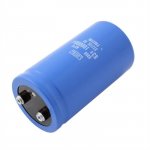 IT-000061_Picture01.jpg21.7 KB · Views: 196
IT-000061_Picture01.jpg21.7 KB · Views: 196 -
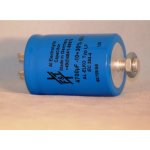 388640_1.jpg111.8 KB · Views: 180
388640_1.jpg111.8 KB · Views: 180 -
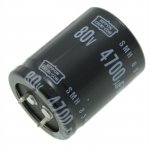 IT-005054_Picture01.jpg32.8 KB · Views: 205
IT-005054_Picture01.jpg32.8 KB · Views: 205 -
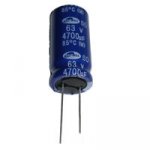 s-l200.jpg4.4 KB · Views: 191
s-l200.jpg4.4 KB · Views: 191 -
cambridge_a500-int_sch.pdf570 KB · Views: 93
-
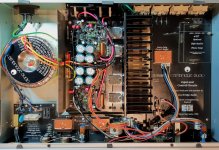 c70bd76349a6a0055bdb9bd07cf1.jpg279.9 KB · Views: 428
c70bd76349a6a0055bdb9bd07cf1.jpg279.9 KB · Views: 428 -
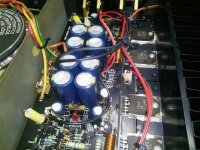 ca p500 recapping panasonic FC.jpg182.5 KB · Views: 292
ca p500 recapping panasonic FC.jpg182.5 KB · Views: 292 -
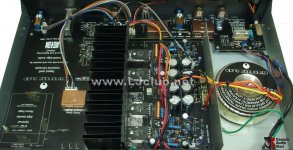 798939-66ae410b-cambridge-audio-a300-integrated-amp.jpg101.4 KB · Views: 757
798939-66ae410b-cambridge-audio-a300-integrated-amp.jpg101.4 KB · Views: 757
Last edited:
concerning this thermal track output power devices there are additional threads:
https://www.diyaudio.com/community/threads/mixing-thermaltrak-with-non-thermaltrak.336761/
https://www.diyaudio.com/community/threads/sanken-output-transistors-std03n-p-new.148456/
https://www.diyaudio.com/community/threads/thermaltrak-transistors-have-been-discontinued.237929/
https://linearaudio.net/sites/linearaudio.net/files/v9 jd.pdf
https://www.diyaudio.com/community/threads/thermaltrack-from-on-semi.310195/
https://www.diyaudio.com/community/threads/on-semi-thermaltrak.71534/
https://www.diyaudio.com/community/threads/techno-sap130-std03p-std03n-130-watt-hifi.276451/
converning to find the right steps for creating discrete Vbe multiplier (post #5) go to this threads:
https://www.diyaudio.com/community/threads/differences-between-various-vbe-multipliers.117047/
https://www.diyaudio.com/community/threads/optimizing-the-vbe-multiplier.216385/
https://www.diyaudio.com/community/threads/vbe-bias-generator-insights.362815/#post-6406955
https://www.diyaudio.com/community/threads/vbe-multiplier-current-compensation-resistor.365670/
https://www.diyaudio.com/community/threads/on-vbe-multipliers.301086/
https://www.diyaudio.com/community/...istoric-vbe-multiplier-biasing-system.284379/
https://www.diyaudio.com/community/threads/doug-self-editing-errors.106137/ (post #2)
https://www.diyaudio.com/community/threads/stv-4h-and-stv-3h-diodes-array.83778/page-2
https://www.diyaudio.com/community/threads/nfb-with-vbe-multiplier-better-than-cfp.376347/
https://www.diyaudio.com/community/threads/vbe-multiplier.143137/
https://www.diyaudio.com/community/...eedback-using-floating-vbe-multiplier.376276/
https://www.diyaudio.com/community/threads/vbe-multiplier-sensitivity.15457/
https://www.diyaudio.com/community/threads/why-bd139-vbe-multiplier.215732/
https://www.diyaudio.com/community/threads/thermal-compensation-of-vbe-multiplier.107427/
https://www.diyaudio.com/community/threads/problems-with-vbe-multiplier.239893/
https://www.diyaudio.com/community/threads/mixing-thermaltrak-with-non-thermaltrak.336761/
https://www.diyaudio.com/community/threads/sanken-output-transistors-std03n-p-new.148456/
https://www.diyaudio.com/community/threads/thermaltrak-transistors-have-been-discontinued.237929/
https://linearaudio.net/sites/linearaudio.net/files/v9 jd.pdf
https://www.diyaudio.com/community/threads/thermaltrack-from-on-semi.310195/
https://www.diyaudio.com/community/threads/on-semi-thermaltrak.71534/
https://www.diyaudio.com/community/threads/techno-sap130-std03p-std03n-130-watt-hifi.276451/
converning to find the right steps for creating discrete Vbe multiplier (post #5) go to this threads:
https://www.diyaudio.com/community/threads/differences-between-various-vbe-multipliers.117047/
https://www.diyaudio.com/community/threads/optimizing-the-vbe-multiplier.216385/
https://www.diyaudio.com/community/threads/vbe-bias-generator-insights.362815/#post-6406955
https://www.diyaudio.com/community/threads/vbe-multiplier-current-compensation-resistor.365670/
https://www.diyaudio.com/community/threads/on-vbe-multipliers.301086/
https://www.diyaudio.com/community/...istoric-vbe-multiplier-biasing-system.284379/
https://www.diyaudio.com/community/threads/doug-self-editing-errors.106137/ (post #2)
https://www.diyaudio.com/community/threads/stv-4h-and-stv-3h-diodes-array.83778/page-2
https://www.diyaudio.com/community/threads/nfb-with-vbe-multiplier-better-than-cfp.376347/
https://www.diyaudio.com/community/threads/vbe-multiplier.143137/
https://www.diyaudio.com/community/...eedback-using-floating-vbe-multiplier.376276/
https://www.diyaudio.com/community/threads/vbe-multiplier-sensitivity.15457/
https://www.diyaudio.com/community/threads/why-bd139-vbe-multiplier.215732/
https://www.diyaudio.com/community/threads/thermal-compensation-of-vbe-multiplier.107427/
https://www.diyaudio.com/community/threads/problems-with-vbe-multiplier.239893/
Last edited:
The better the parts the crappier the designers become...30 years ago it was common wisdom that you need extensive theoretical and practical background to become a good designer...today everybody can use lt-spice, google and youtube and become a semi-designer...just good enough for the lower income jobs cause audio design is just one in 50 skills that you're asked to have when interviewed by an audio company.They actually preffer c# software guys that can do some analogue too...and my simple test and fix experience tells me that there's less that 1000 guys in the whole world that can be equally good at software and hardware...just because these are very different sets of skills.If you love tube amps and try to apply for a job at Marshall or Blackstar bear in mind that you have no chance to get a job there without serious C programming skills that need a decade or so of complete dedication ...They already have an 80 years old daddy working in the back with tube design...and he basically works part time for both Blackstar and Marshall...
I did fixed once a 300watts Behringer active speaker with sap n and p 15...just changed the fuse basically as it had no problem whatsoever and it still works in its 13th year since it was bought ...Apparently the Behringer guys were professional enough to use those transistors the right way.
I did fixed once a 300watts Behringer active speaker with sap n and p 15...just changed the fuse basically as it had no problem whatsoever and it still works in its 13th year since it was bought ...Apparently the Behringer guys were professional enough to use those transistors the right way.
- Home
- Amplifiers
- Solid State
- Wide range of unreliable Amp Models with SANKEN's SAP/STD Series - Why ?